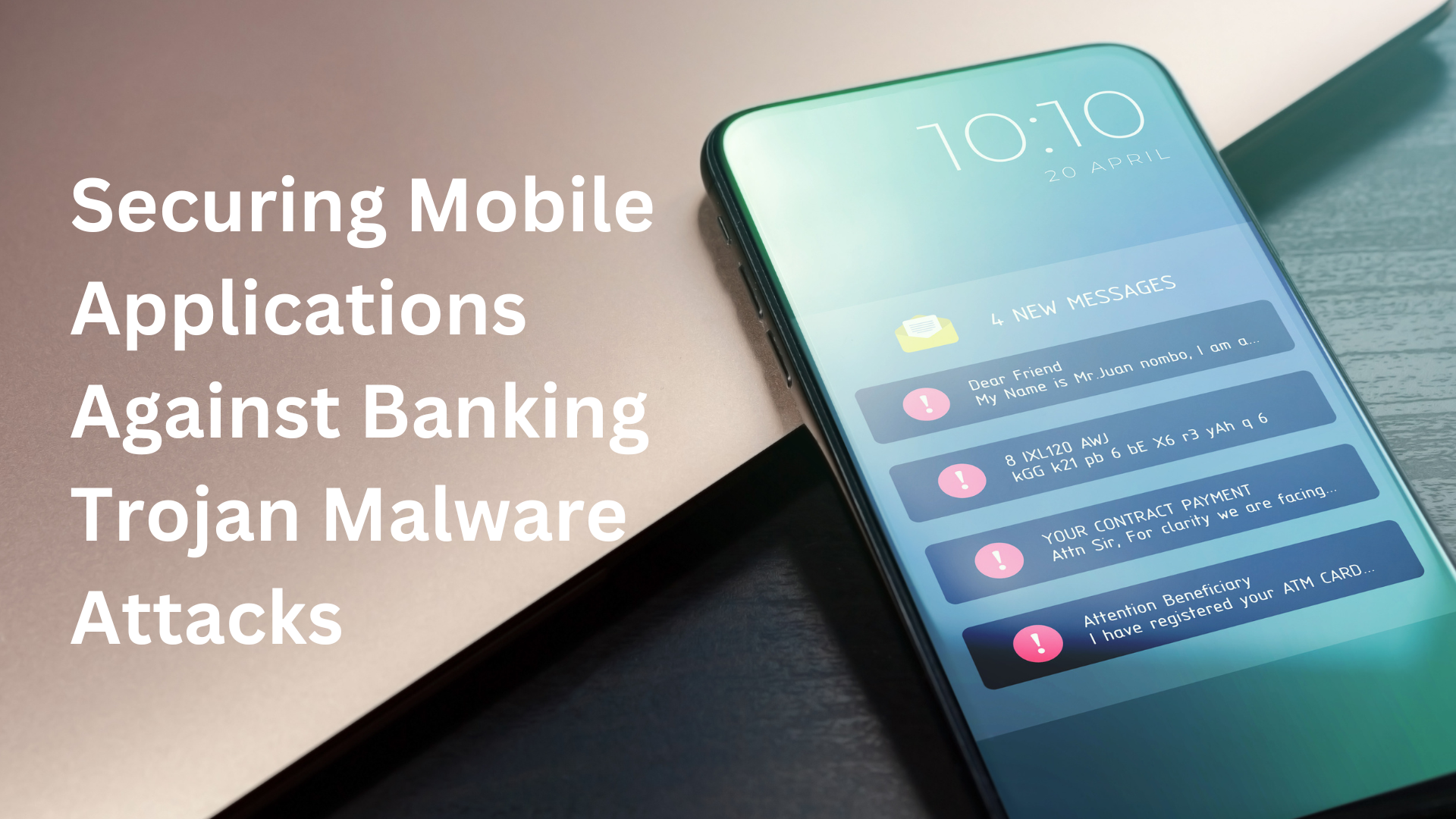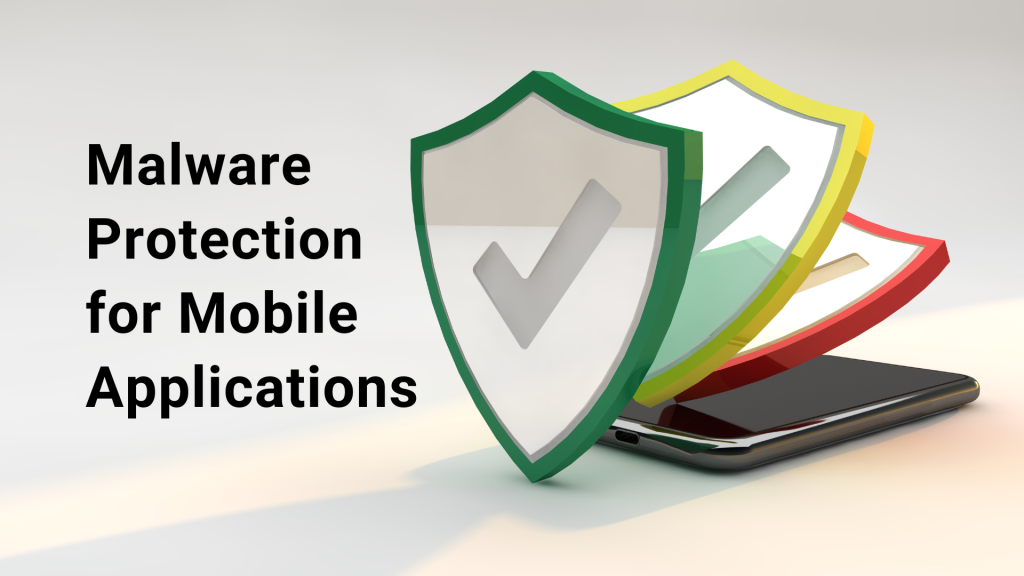
Securing Mobile Applications Against Banking Trojan Malware Attacks
Mobile and IoT devices have become the primary means of accessing cloud-based services in today’s world. In addition, cybercriminals now have unprecedented physical access to these devices, creating new opportunities to steal sensitive information, bypass business logic, and attack other devices. 76% of mobile banking vulnerabilities can be exploited without physical access to the device, according to a report [1]. Therefore, it is becoming increasingly important for organizations to deploy application shielding technology that makes it difficult for cybercriminals to reverse engineer and tamper with software. As threat actors continue to launch attacks aimed at disrupting internet users’ banking accounts, malware targeting the finance industry regularly dominates headlines. Financial institutions may become easy targets for malicious actors as more mobile app users turn to them for better safety. Throughout this article, we will examine current malware trends and predict the future of the industry. Together, we will explore the risks facing end-users and financial institutions alike, as well as potential solutions to protect against these evolving threats, including SecIron’s IronWALL solution, which offers a comprehensive suite of solutions to help safeguard against them. The shares of attacks that used Adware and Riskware-type applications had increased to 26.91% from 16.92% in 2021 and to 5.31% from 2.38% in 2021, respectively. Malware was the most common type of attack distribution with 67.78% [2].Malware: An Overview
Malware is a dangerous software that can disrupt computer systems, networks, and devices, while also giving cybercriminals access to sensitive information like login credentials, personal and financial data. This enables them to bypass security measures and execute banking Trojan attacks, leading to financial loss, damage to brand reputation, and increased liability and regulatory risks. Among the different types of attack distribution, banking Trojan has become increasingly popular among cybercriminals. Malicious apps imitating popular apps can be disseminated through various channels, including deceptive mobile applications, webpages, and social media networks. These apps use screen hijacking to over overlay false login screens over authentic banking app pages, capturing users’ passwords in the process, control devices remotely, monitor and record keystrokes and transfer funds out of the compromised account with ease. Given their ability to bypass traditional security measures, it’s crucial to be extremely cautious and use robust security solutions to prevent these attacks.The Need for Comprehensive Protection
To safeguard against bank Trojan malware, protection measures must be taken, which includes These malicious programs can employ a variety of attack techniques, including screen hijacking, keylogging, SMS hijacking, and remote access. However, SecIron’s IronWALL offers a comprehensive solution to mitigate these risks.- SecIron’s IronWALL prevents screen hijacking by warning the user when their app may be put to the background, and there is another app or screen covered on top. It uses a secure keyboard to prevent keylogging by blacking out the screen from screen reading and encrypting the input value. Additionally, IronGATE can prevent SMS hijacking by moving away from SMS to use software tokens instead. This approach is more cost-effective and secure, as the One-time password (OTP) is generated locally in the device, where the soft token is bound to it, eliminating the risk of OTP stolen during transmission.
- IronWALL also combines with secure keyboard API and Android API to prevent remote access data stealing by blacking out the screen. Although remote access to the device cannot be blocked by the app, IronWALL chooses not to display anything on the remote screen, making it impossible for the cybercriminals to see sensitive information.
- Moreover, IronWALL has a strong anti-reverse engineer technique that uses three layers of protection, including code concealing, encryption, and transformation, to increase the difficulty level of de-compilation. Alongside other protections like runtime attacks prevention, anti-tampering, and data file encryption, IronWALL ensures the app runs securely on an untrusted or compromised environment.
Conclusion
The increasing popularity of mobile and IoT devices has made them prime targets for cybercriminals to launch bank Trojan malware attacks that can have serious consequences. It is essential to take comprehensive protection measures to safeguard against it. These attacks can cause significant financial loss, damage to brand reputation, increased liability, and regulatory risks for both individuals and organizations. By adopting such solutions, businesses can protect themselves against evolving threats and secure their mobile and IoT devices, providing end-users with better safety and peace of mind. Sources: [1] https://www.ptsecurity.com/ [2] https://securelist.com/mobile-threat-report-2022Related post

Safeguard your mobile apps from malware and other malicious threats with comprehensive malware protection solutions for mobile applications.

Discover the state of malware landscape in Southeast Asia (SEA) and how to protect your mobile applications from malware threats.
Ready to launch a secure app?
WE CAN HELP!

Ananya
Making Your Security
Project A Success!
By filling out this form, you opt-in to receive emails from us.
Categories
- Blog (26)
- Latest News (4)
- Success Stories (4)
- Whitepapers & Guides (3)
Recent Posts

Mobile App Security Trends and Strategic Solutions in 2025
November 18, 2024
Protecting Mobile Apps with Strong Threat Detection Solution
November 7, 2024Recent Comments
No comments to show.
Tags
There’s no content to show here yet.
Recent Posts
- Top Mobile App Security Threats and How to Mitigate Risks in Mobile Banking
- Mobile App Security Trends and Strategic Solutions in 2025
- Protecting Mobile Apps with Strong Threat Detection Solution
- Protecting Mobile App from Threats with Application Hardening
- Enhancing Mobile Banking Security to Combat the Rising Threat of Malware in Malaysia

